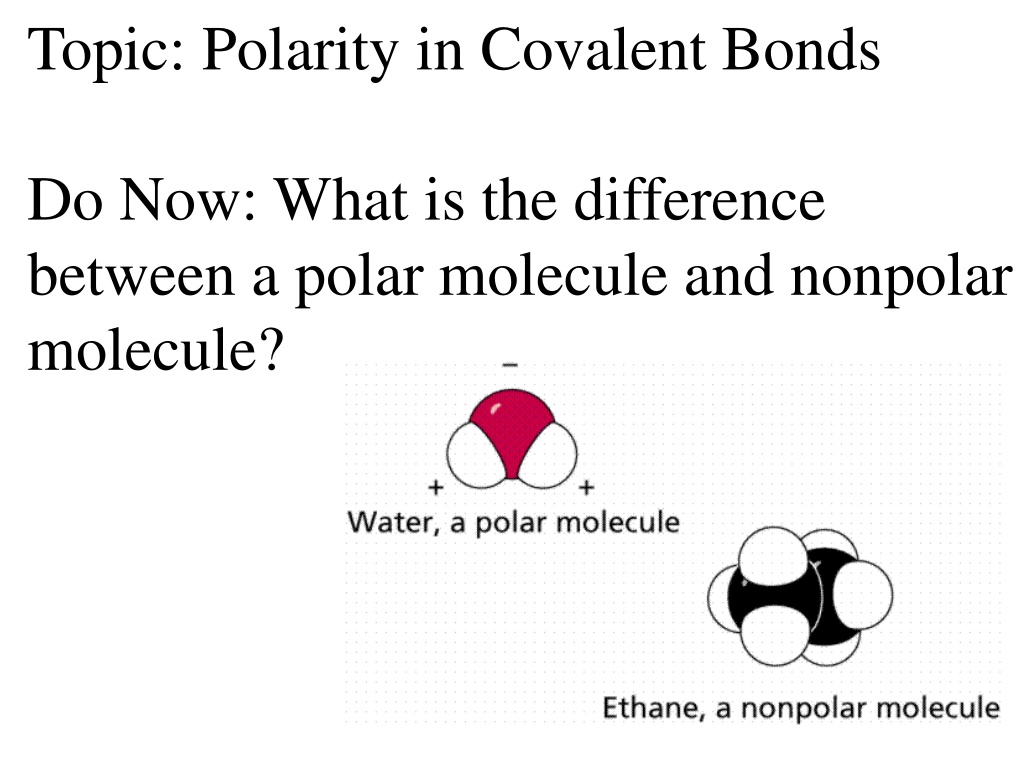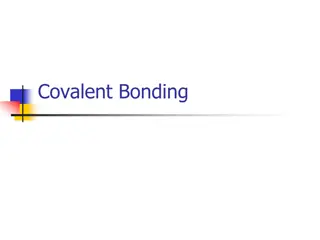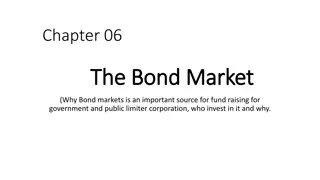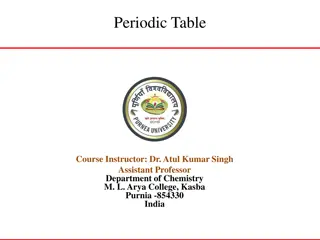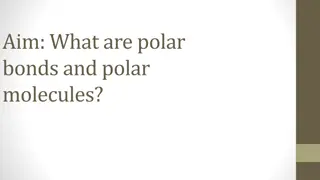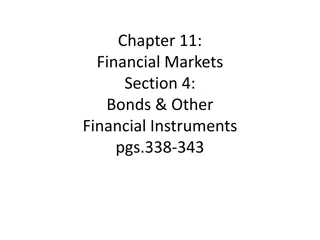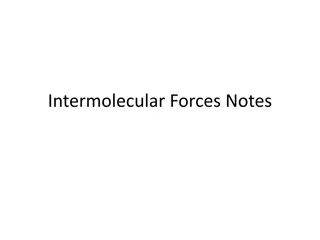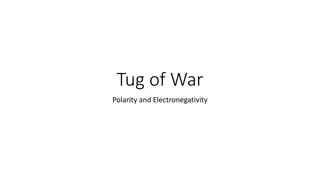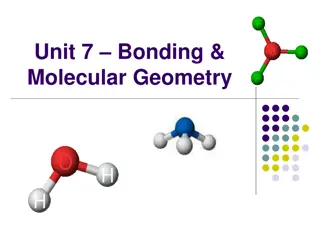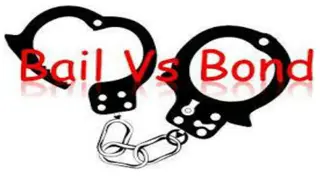Understanding Polarity in Covalent Bonds
The difference between a polar molecule and a nonpolar molecule lies in the distribution of electrons. A polar molecule has an asymmetric electron distribution due to a significant difference in electronegativity, while a nonpolar molecule has a symmetric electron distribution. You can predict polarity by comparing the electronegativities of the atoms in the bond. Bond polarity depends on the electronegativity difference, where a larger difference indicates a more polar bond.
Download Presentation

Please find below an Image/Link to download the presentation.
The content on the website is provided AS IS for your information and personal use only. It may not be sold, licensed, or shared on other websites without obtaining consent from the author. Download presentation by click this link. If you encounter any issues during the download, it is possible that the publisher has removed the file from their server.
E N D
Presentation Transcript
Topic: Polarity in Covalent Bonds Do Now: What is the difference between a polar molecule and nonpolar molecule?
How do you tell Polar from Nonpolar?? From the IMF unit we learned . If it s dispersion (diatomic, noble gas, pure hydrocarbon, small symmetrical) it s nonpolar If it s not it s polar
Polar Bond (Asymmetric) Polar has poles Meaning ends are different Polar bond: one end more electrons than other end So there is a Large difference in electronegativity
Nonpolar Bond (symmetric) Nonpolar = No poles electron cloud on one end of bond same as other end Same to no difference in electronegativity
electron density in HCl and H2 H2 is symmetric. Both ends are the same. The electron cloud is football-shaped. HCl is asymmetric. The electron cloud is lop- sided. Chlorine has more than its fair share.
Which bond(s) are polar? Which are nonpolar? Polar = LiH and HF. Nonpolar = H2 electron density picture LiH, HH, HF Red = electron rich. Blue = electron poor.
How can you predict if a bond is Polar or Nonpolar if you don t have a picture of the electron cloud?? Compare the electronegativities (subtract the difference) of the two atoms in the bond. Nonpolar Covalent 0- 0.5 Ionic 1.7-4.0 0 0.5 1.7 4 Polar Covalent 0.5-1.7
Electronegativity Ability of an atom to attract electrons in a bond. Look it up in Table S!
Bond Polarity Depends on the difference in electronegativity of the two atoms in the bond. EA - EB A B Polarity Bond -You only care about the size of the difference, not the sign. -The bigger the difference, the more polar the bond.
Electronegativity Difference Electronegativity Difference Type of Bond Nonpolar Covalent 0.0 to 0.5 0.6 to 1.7 Polar Covalent Ionic > 1.7
Nonpolar Covalent 0- 0.5 Ionic 1.7-4.0 0 0.5 1.7 4 Polar Covalent 0.5-1.7 Most Ionic Character (greatest difference) Most Covalent Character Most Ionic Character (smallest difference)
Predict the Polarity & Bond Type 3.0 3.0 = 0, Nonpolar Covalent N2 3.2 0.9 = 2.3, Ionic NaCl 3.2 2.1 = 1.1, Polar Covalent HCl 3.4 3.4 = 0, Nonpolar Covalent O2 3.0 1.0 = 2.0, Ionic LiBr 2.7 2.1 = 0.6, Polar Covalent HI 3.0 2.1 = 0.9, Polar Covalent HBr
Review Which of the following bonds is the most polar? A) O2 B) HCl C) NH in NH3 D) HBr 3.4 3.4 = 0 3.2 2.1 = 1.1 3.0 2.1 = 0.9 3.0 2.1 = 0.9 Answer = (B) HCl
Review Which substance contains a bond with the greatest ionic character? A) KCl B) HCl C) Cl2 D) CCl4 3.2 2.6 = 0.6 3.2 0.8 = 2.4 3.2 2.1 = 1.1 3.2 3.2 = 0 Answer = (A) KCl
Summary Nonpolar covalent bonds form between atoms having equal or close electronegativity values. (Difference is < to 0.5.) _ Polar covalent bonds form between atoms with an electronegativity difference between 0.5 and 1.7. Ionic bonds form between atoms with an electronegativity difference > 1.7.
